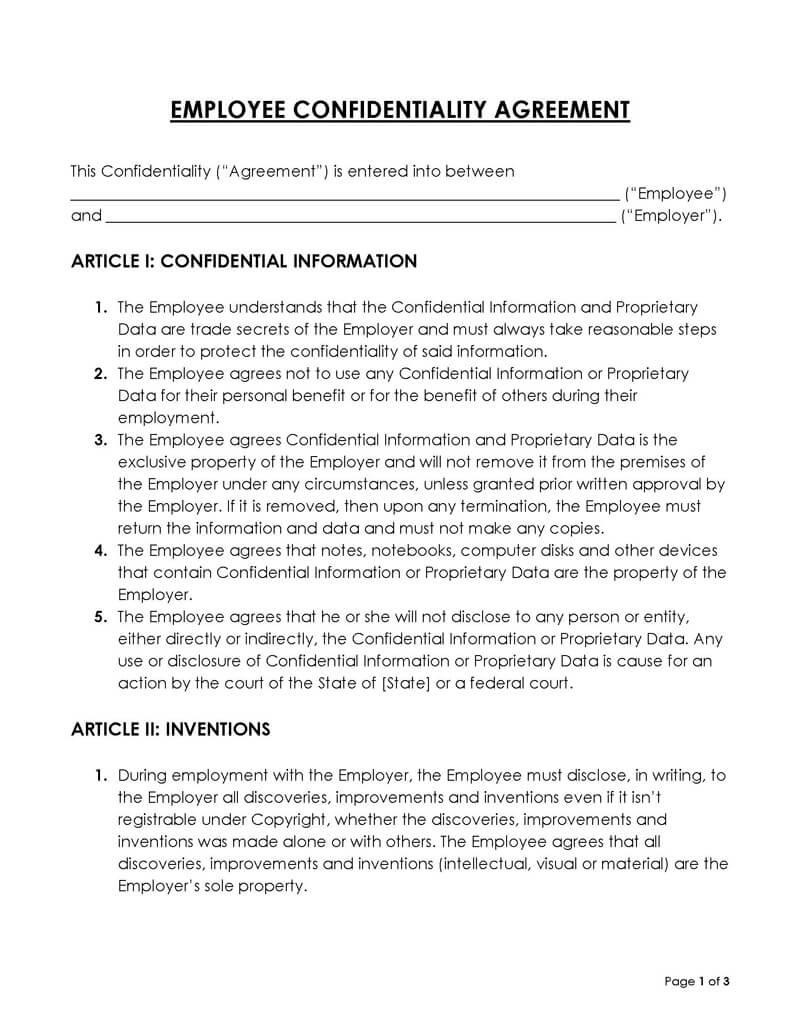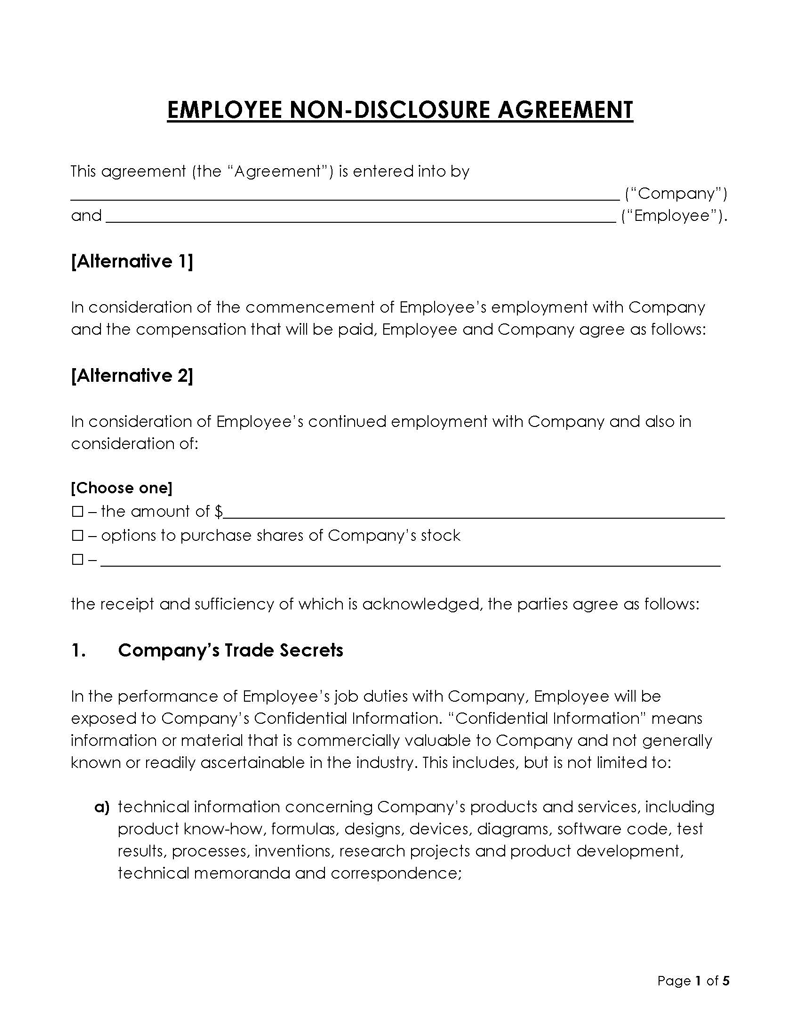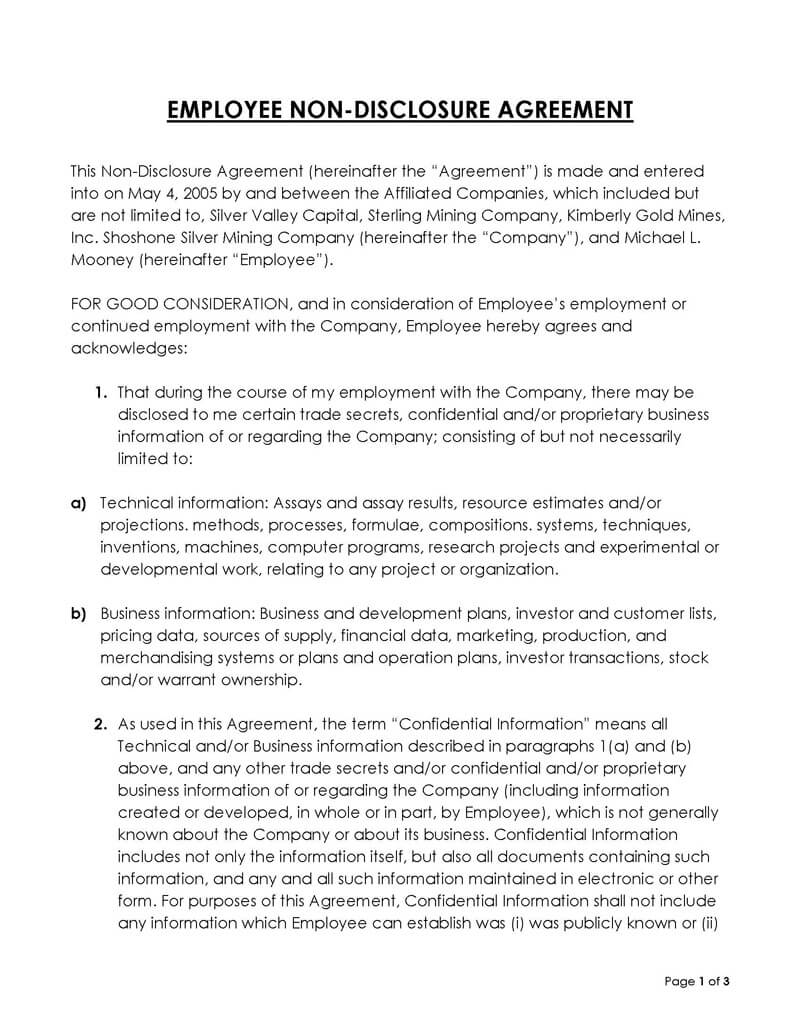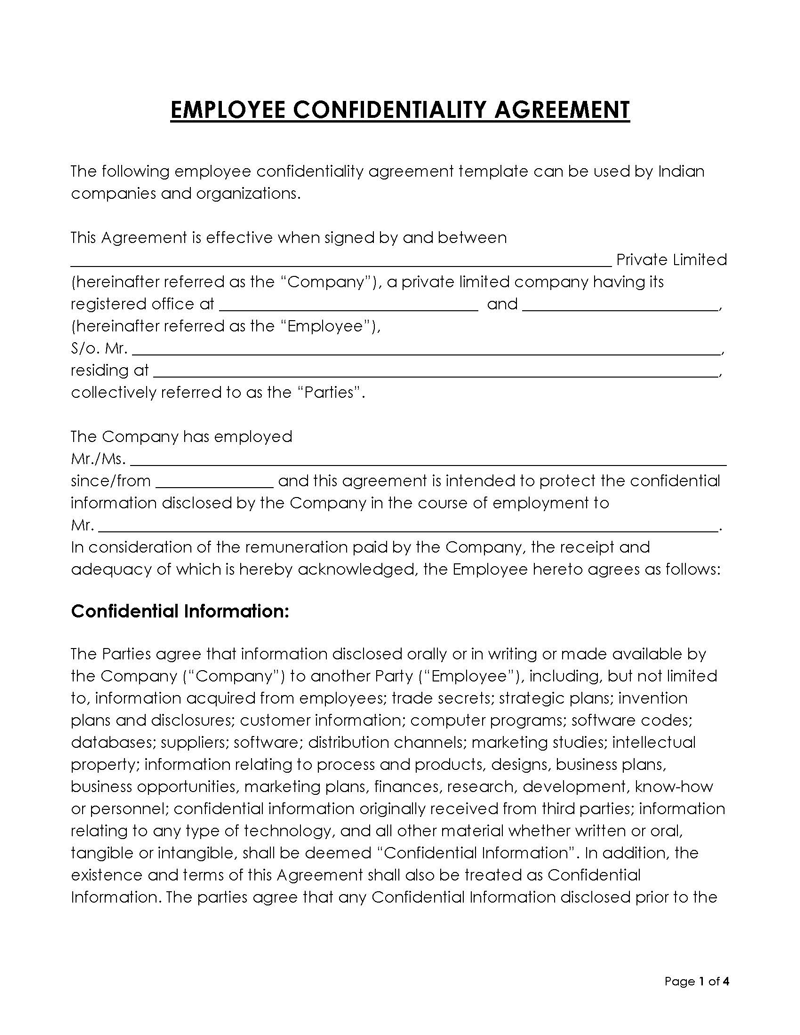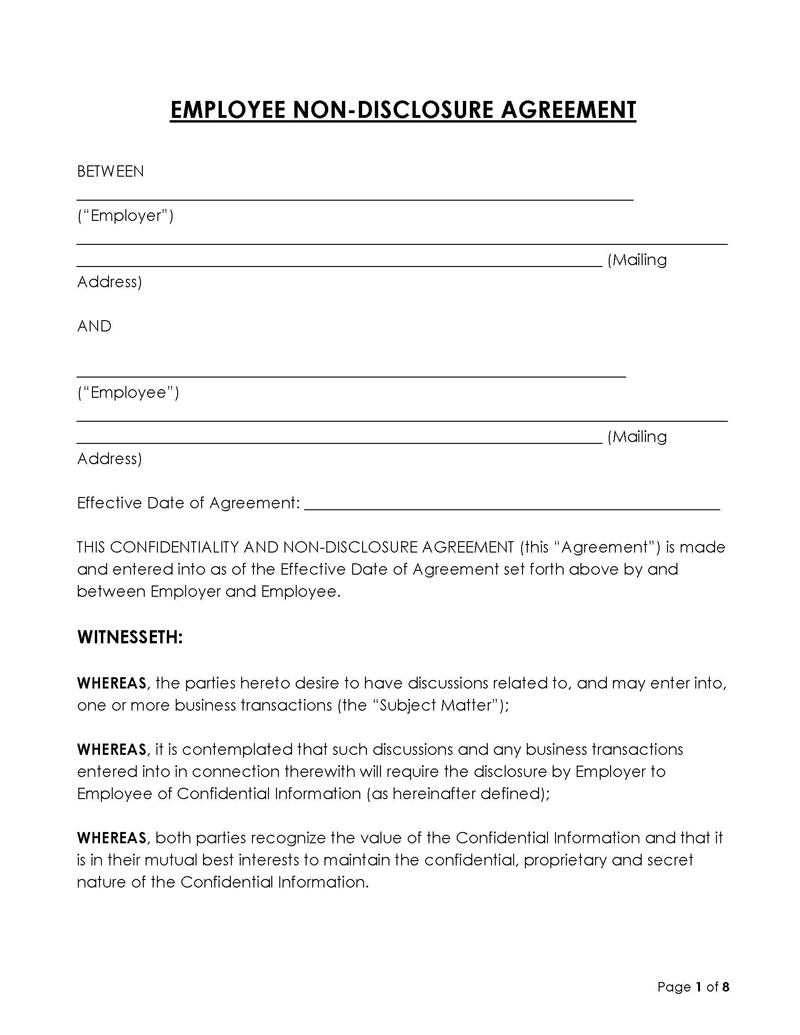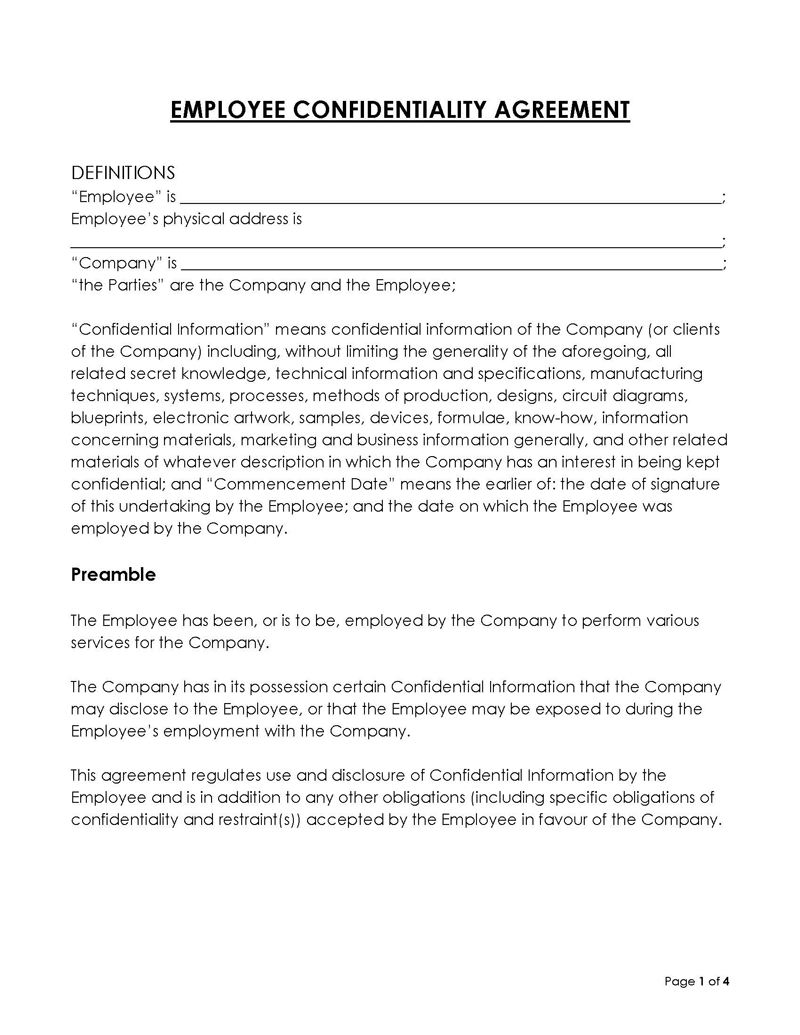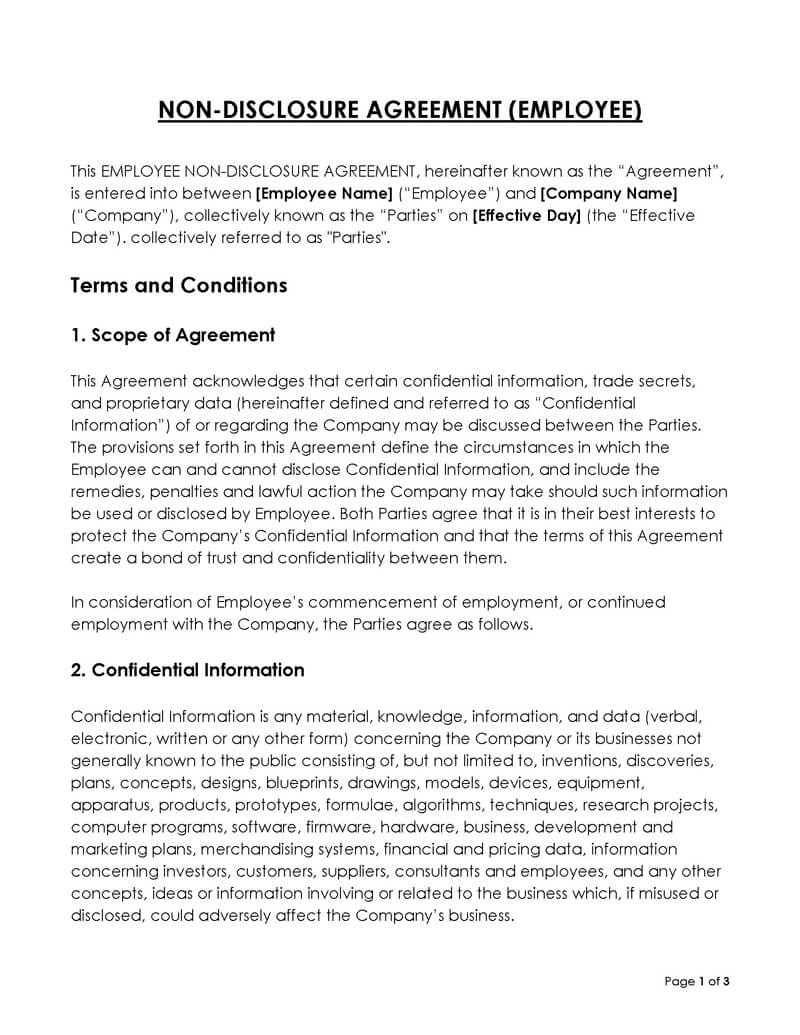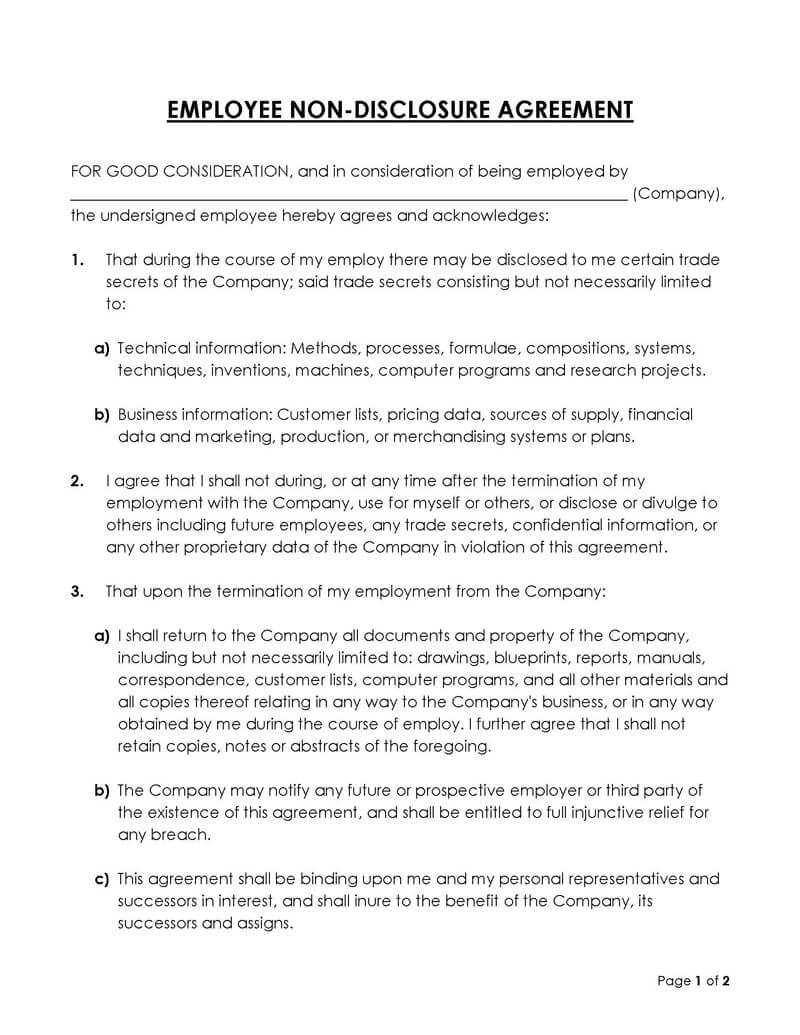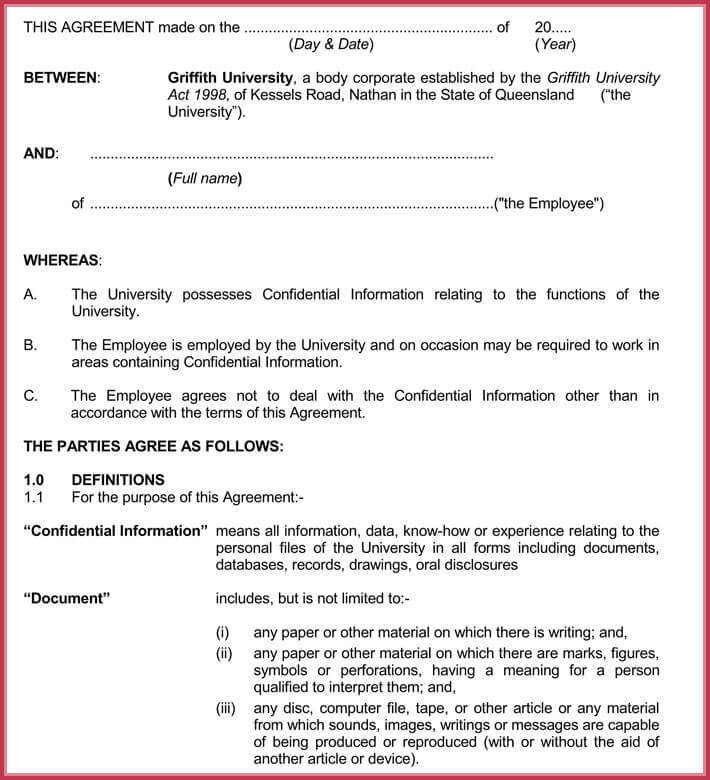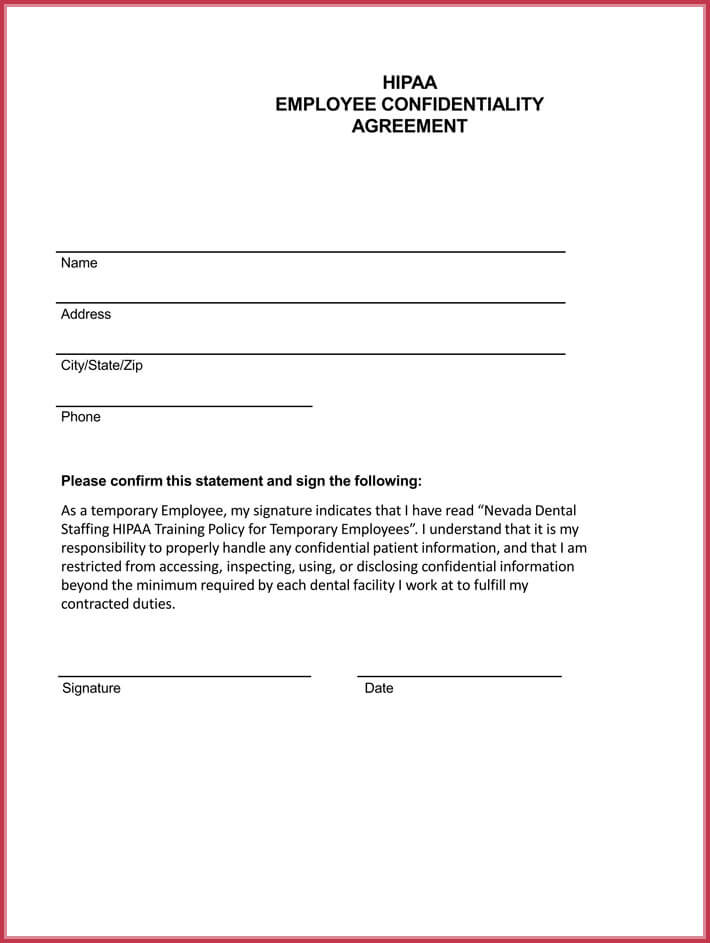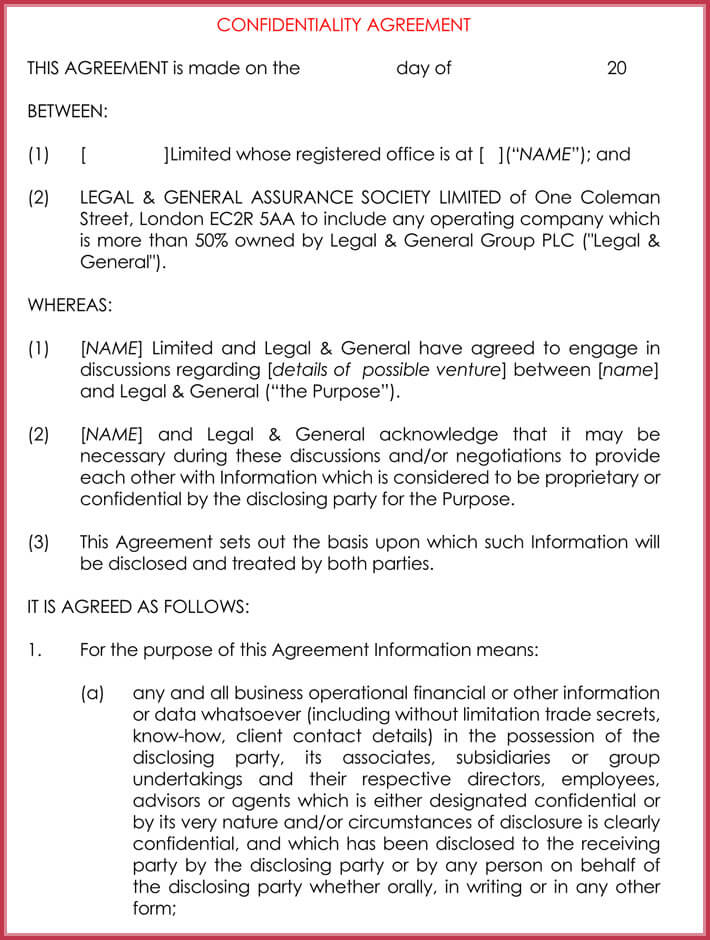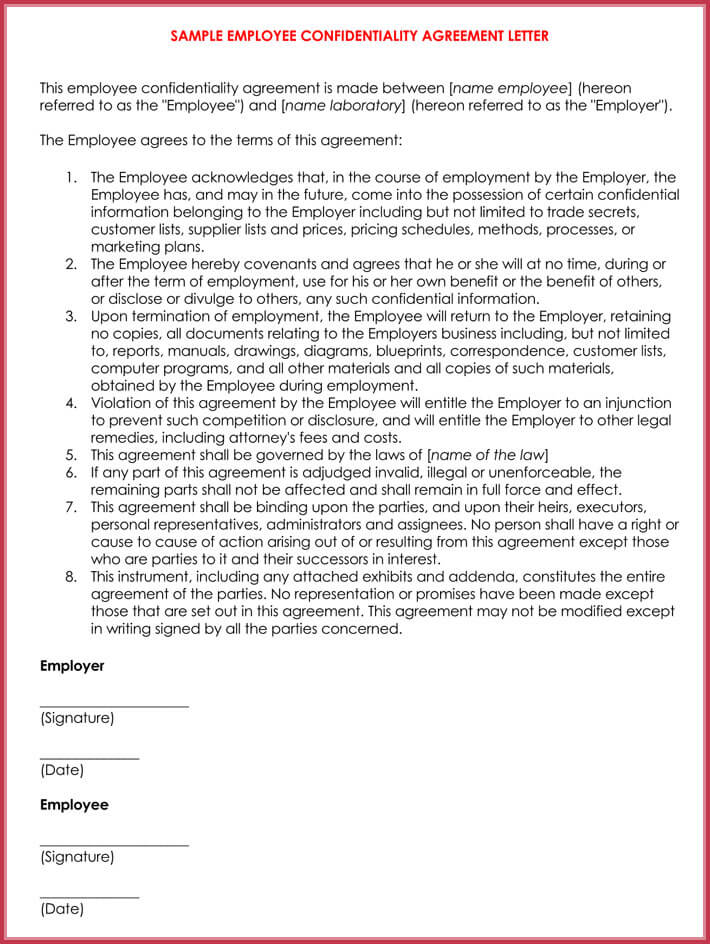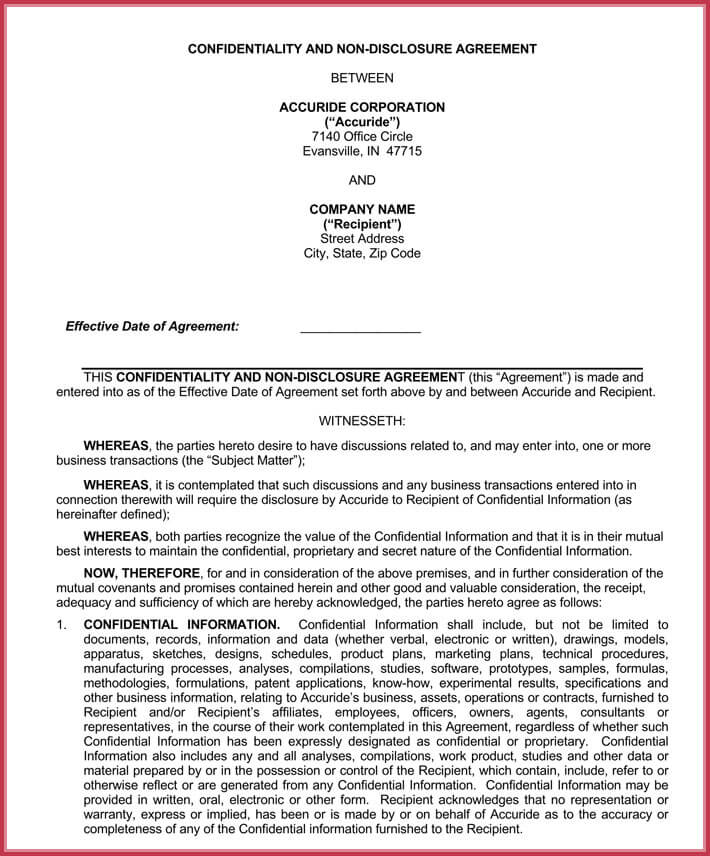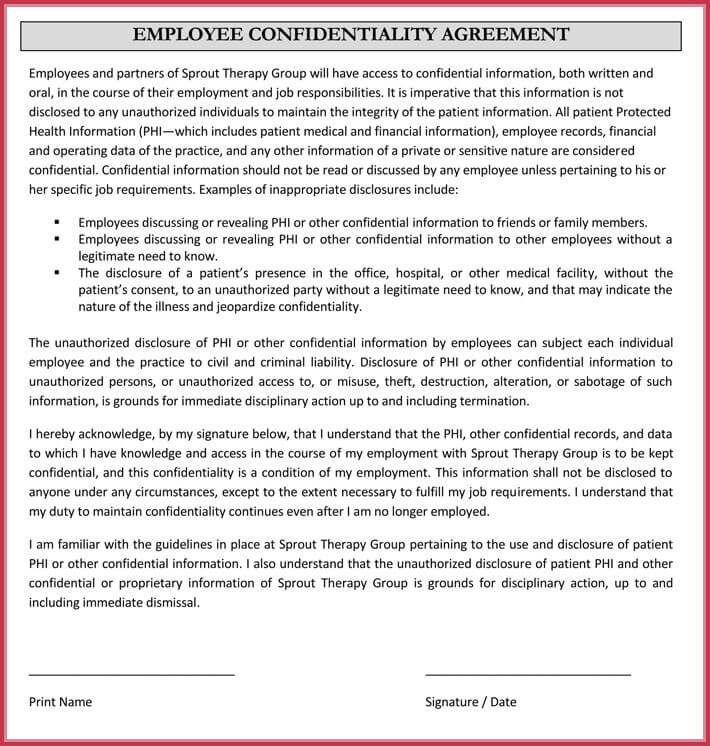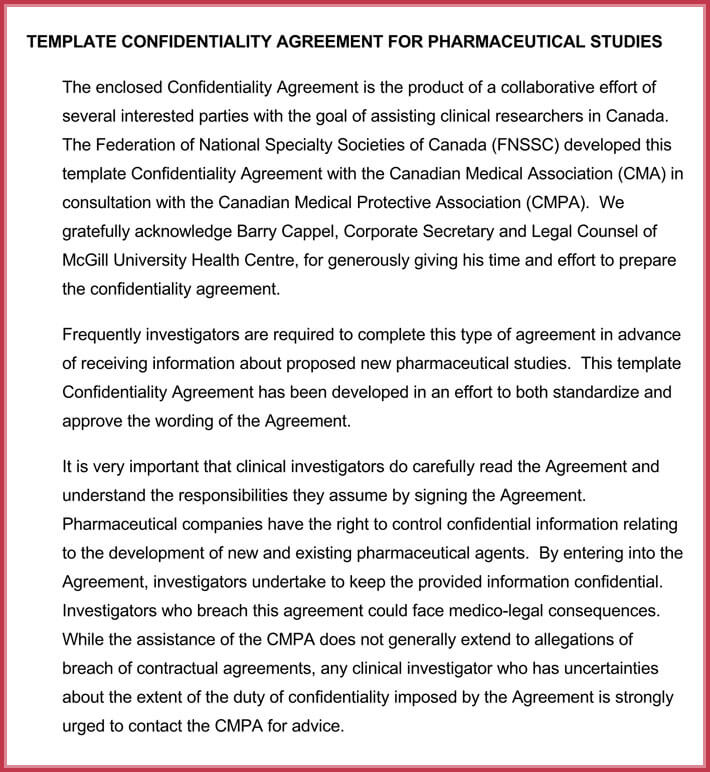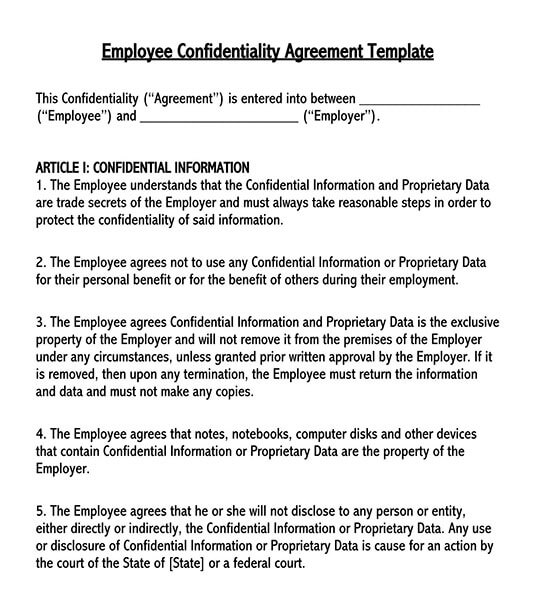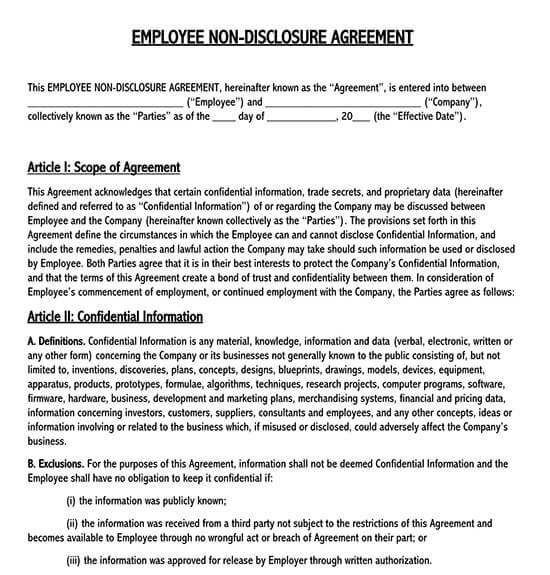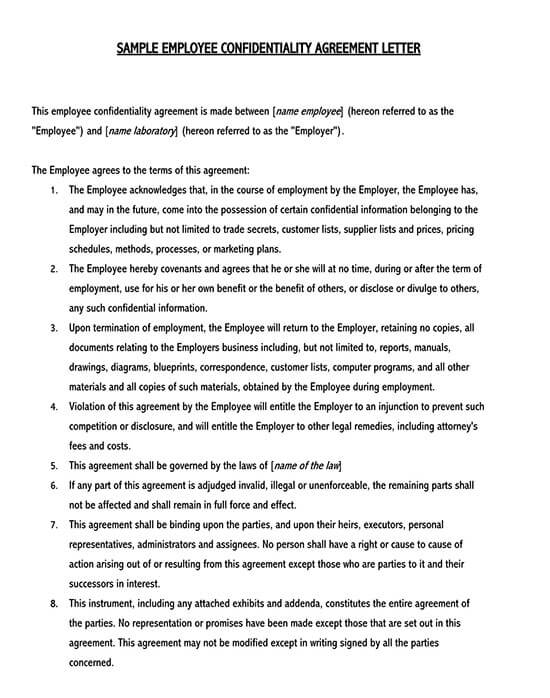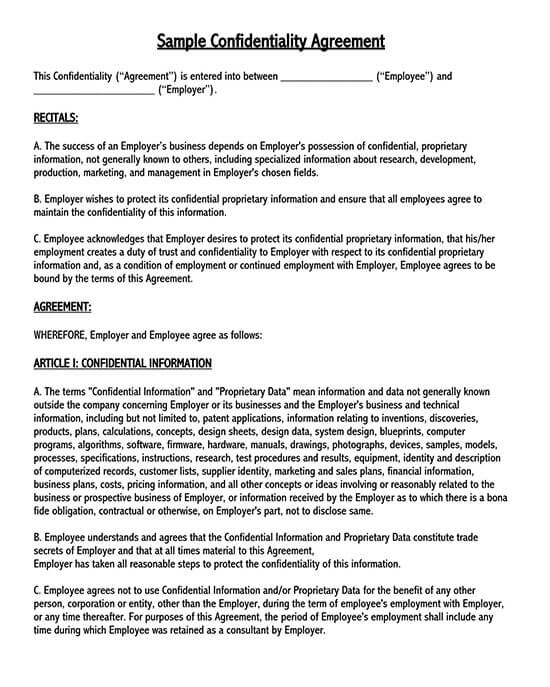Even though we work every day in building our businesses and maintaining what keeps us going, there comes a time when we are forced to share such information with other people. To prevent them from disclosing sensitive information that could easily jeopardize our business, it is imperative that we have them sign a confidentiality agreement or any other non-disclosure agreement.
Businesses use employee confidentiality agreements to help them protect their innovative ideas, unique products, customer information, or effective processes. With a confidentiality agreement, one can train their employees on the ins and outs of their business and still protect their company’s most important information.
An employee confidentiality agreement also referred to as a non-disclosure agreement (NDA), is an agreement that prevents the employee from disclosing confidential information about a business.
Employee confidentiality agreements are not normally broad – they only list the specific information that the employees are not allowed to reveal. The primary objective of a confidentiality agreement is to protect any important business information that you share with your employees from being disclosed to other people outside of the agreement for a specified period. For an employee confidentiality agreement to take effect, the employee must sign it.
Confidentiality agreements cannot be used, however, to prevent employees from speaking up about unethical or illegal activities. One can also use confidentiality agreements when working with other parties like independent contractors, investors, and vendors.
Non-Disclosure Agreements (NDA) vs Non-Solicitation Agreement
A non-solicitation agreement restricts an employee how has been terminated from taking your business’s customers, contacts, or other employees, either for themselves or for another party. For instance, a terminated employee cannot try to take your clients or your client list with them.
Unlike the employee NDA, which prevents the employee from sharing confidential information, the non-solicitation agreement says that employees won’t solicit or use confidential information.
Types of Confidentiality Agreements
There are different types of confidentiality agreements;
Mutual and unilateral confidentiality agreements
In a mutual confidentiality agreement, both parties involved share sensitive information. In a unilateral non-disclosure agreement, only one party shares confidential information with the other party. (to find out more about mutual and unilateral confidentiality agreements, check out the basic confidentiality agreement, which has an in-depth definition of the two) Typically, employee confidentiality agreements are one side, unless one is looking to obtain confidential information from the employee.
Complete and non-solicitation agreements
Non-disclosure agreements protect specific confidential information about your business from being disclosed. On the other hand, non-compete agreements prevent the employees from working for or becoming your competitors for a specified amount of time. The non-solicitation clause helps restrict employees from talking in similar positions or working for your competitors.
Parts of an Employee Confidentiality Agreement
All employee confidentiality agreements vary. However, the agreement should contain the same standard information and require that the employees sign it to make it official.
All employee confidentiality agreements should answer the following questions:
Who Are The Parties Involved?
In the agreement, list the disclosing party (you/employer) and the receiving party (the employee). The employee then must sign and date the agreement, too.
What Information Is To Be Considered Confidential?
Employee Confidential Agreements must be narrow. Don’t try to make each and every information about your business confidential, or the agreement will be invalid. Properly list out exactly what information is to be classified as confidential and discuss whether such information is written or verbal communication.
To learn more about the various different types of information that can be classified as confidential, check out our basic confidentiality agreement.
What Is Information Not Confidential?
The employee confidentiality agreement should clearly talk about what information is not to be treated as confidential. For instance, the confidential agreement cannot cover information that is already known to the public or already known by the employee.
When Will The Agreement Go Into Effect, And For How Long?
Basically, an employee confidentiality agreement goes into effect the day the employee signs it. One must also specify how long the confidentiality agreement is to last. Non-disclosure agreements normally continue between two to five years.
What Happens If The Employee Violates The Agreement?
The agreement should explain the consequences should the employee disclose any confidential information, such as suing them or enforcing other penalties.
Employee Confidentiality Agreement Templates
5 Best Practices for Writing Agreement
Following are the best practices to follow while drafting the employee confidentiality agreement:
- If you are looking to create an effective employee confidentiality agreement, consider consulting a lawyer. This is because of the binding nature of the agreement. For such agreements, you should be keen on the language you use. A lawyer will also help you make sure that the agreement meets your state laws.
- Go over the employee confidentiality agreement with your employee before they sign it. Some of the wording might be confusing for them, so make sure to discuss what information is to be considered confidential, the duration of the agreement, and the consequences of breaching the agreement.
- Keep a copy of the employee confidentiality agreement in your records. Ensure that the agreement is in a safe and secure location. You can even consider uploading a copy to your human resource software or storing it in a locked filing cabinet. Also, give a copy of the agreement to the employee.
- Also, you can include information about the employee confidentiality agreement in your employee handbook; that way, you can be able to reiterate what information the agreement protects. This will help the employee to access the information easily and understand the contents of the agreement.
- As part of your employee termination checklist, make sure to remind the employees that they signed a confidentiality agreement about confidential information. Provide an additional copy of the employee confidentiality agreement before the employee leaves the premises.
More Examples
Frequently Asked Questions
My Employer Wants Me To Sign For Them A Confidentiality Agreement. Is It Ok?
You should only sign a confidentiality agreement for your employer if the agreement is directly related to your consulting for that organization, and the confidentiality agreement is issued to you as an individual.
Why Are Confidentiality Agreements Important?
Confidentiality agreements protect your company’s confidential information from being disclosed to other unauthorized parties who may end up using the information against your company.
What Is The Purpose Of A Non-Compete Agreement?
A non-compete confidentiality agreement is an agreement in which only one party agrees not to compete against the other. In an employer-employee situation, this simply refers to an employee who is the recipient of the prohibition on competition and an employer being the protected party, who is using the non-compete agreement to protect their business within a specified demographic area for a specified period.
